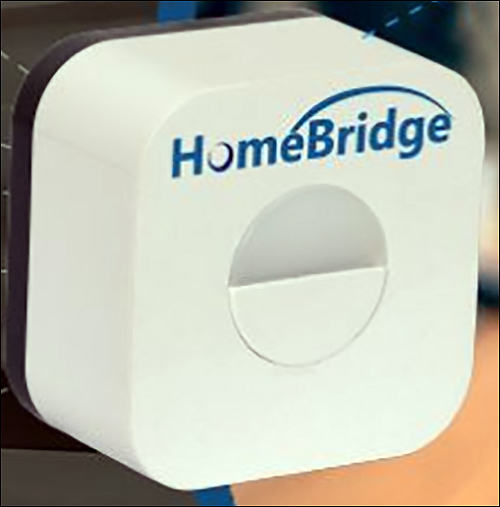Volansys Technologies, located in Santa Clara, Calif., has built Bluetooth Low Energy (BLE) functionality into its HomeBridge home-automation solutions gateway, enabling BLE devices, beacon tags and mobile phones to be integrated seamlessly using the company’s gateway. The latest version of the HomeBridge IoT gateway will be released during the coming year to support BLE 5.0 transmissions, and to forward beacon data, along with existing support for Wi-Fi-to ZigBee-based gateway transmissions.
The company already sells a $99 kit that includes the HomeBridge device, along with ZigBee-enabled smart bulbs, door sensors and motion sensors for evaluation. The HomeBridge solution was first released in mid-2017 to provide a low-cost ZigBee-to-Wi-Fi IoT gateway solution.

The square, hockey puck-sized gateway—which measures 56 millimeters (2.2 inches) across and 33 millimeters (1.3 inches) thick—can be installed in a home by using a default wall-outlet mounting option. It can be further customized to support desktop mount options. The gateway can then connect with up to 40 devices, and can bridge that data to a user’s cloud-based server. The gateway can be leveraged by device manufacturers and solution providers. For device manufacturers, “gateway manufacturing and cloud integration isn’t their forte,” says Dhruvesh Patel, Volansys’s CTO.
The HomeBridge is intended to provide a more generic solution for all smart devices in a home system, so that IoT data can be collected on a single platform. “We wanted a gateway that could be used in any home and bridge any devices to the cloud,” Patel explains, without heavy computing at the edge. The gateways simply capture ZigBee- and Wi-Fi-based data, then forward that information to the cloud, where the management of data can take place. He adds that a growing number of IoT companies are offering niche solutions for applications ranging from security to home entertainment and lighting.
Since the HomeBridge’s 2017 release, Volansys has been examining ways in which it could leverage other technologies. The result is the inclusion of BLE. Last year, the Bluetooth Special Interest Group (SIG) released BLE 5.0 for mesh-networking applications in building and home automation (see Bluetooth SIG Specification Enables BLE Mesh Networks).
There are a host of use cases for the gateway and BLE transmissions, Patel says, such as light switches. Intelligent lighting is enabling some of the most common use cases, he adds, to manage the level of lighting within a given space and at particular times.
Volansys’s gateway provides a single source to receive BLE data from multiple devices—light bulbs or switches, for instance—then forwards that data to a cloud-based server. With the BLE nodes built into fixed devices like light switches, an individual could use a smartphone and an app to program commands for lighting management. Those commands could be received by the closest HomeBridge device, which could then forward the collected data to light switches or fixtures within a home or facility. Similarly, BLE nodes in other environmental controls could be managed with a smartphone or tablet, as long as the Bluetooth radio was turned on.
“BLE has always been there, and it has an advantage over many technologies because of its user-friendliness,” Patel states. “Bluetooth is something people are already accustomed to—and with BLE 5.0, a user can create a mesh network.”
With the system in place, any device that is BLE-compatible (with a built-in BLE 5.0 radio) can send data to the gateway or receive a BLE transmission from that device, and then forward it to a server. For instance, with a HomeBridge gateway, an office manager could set up a system to identify when individuals with BLE badges, or with BLE functionality operating on their mobile phones, enter or leave an area. Beacon-enabled devices could also come with sensors and forward sensor-based data, such as temperature changes, along with alerts, via the mesh network to the gateway, which could forward that information to the cloud for appropriate dissemination.
In an elder-care setting, data related to the location and movement of an elderly individual could be tracked using a BLE badge transmitting to the BLE-enabled gateway. “Our solutions and technology focus are driven by two factors,” Patel says, “what customers want and what we see as potential for new technologies.”
The HomeBridge solution is designed to be ready to install, though in some cases, companies are seeking a customized proprietary solution, for which Volansys can create a modified version. The BLE-enabled model is expected to be made available by the second quarter of this year, Patel reports, and is now being piloted by several early customers.

